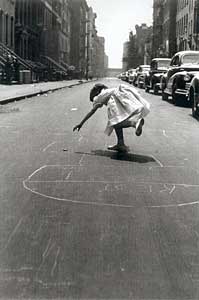George Zimbel
George S. Zimbel (Woburn, Massachusetts 1929) took his first photographs in the forties while he was still at secondary school. He graduated in Liberal Arts in 1951 at Columbia College in New York, where he worked for the Columbia Spectator as photographer and editor and in his second year at college had his photographs published in Columbia Alumni Magazine, Life Magazine and the Daily News. In 1949 he studied with the painter and architecture photographer John Ebstel at the Photo League, which influenced his subsequent dedication to documentary photography. In 1951 he was accepted as a non-paying student in the course directed by Alexey Brodovitch, and he worked as a correspondent of Pix Inc., one of the first photo agencies in New York. There he met photographers such as Ed Feingersh, Bob Schwalberg, Bob Henriques and Garry Winogrand, who were beginning to use the new 35 mm cameras, which gave them more freedom of movement, and films with greater light-sensitivity. During 1952 and 1953 he was a member of the US Army in Europe, and he made various photographic studies in England, France, Germany and Italy. When he returned to the United States some of his photographs were published in major newspapers and magazines, such as The New York Times, Look, Redbook, Parents, Pageant, Saturday Review and Architectural Forum. He joined the American Society of Magazine Photographers, of which he is now a life member. In the late fifties and early sixties he made a photographic study of American politicians, which is considered one of his most representative works. He followed Harry S. Truman on his campaigns and took over 500 photographs, which now form part of the collection of the Harry S. Truman Library in Independence, Missouri. In 1954 he took some of his best-known pictures, the series on Marilyn Monroe taken during the shooting of the film The Seven Year Itch and the photograph Irish Dance Hall, The Bronx, which was acquired by the MoMA. As an extension of his documentary work he prepared a number of exhibitions for the US Information Agency, which were shown in various cities in Europe and Asia. During the sixties he worked as a consultant for the Ford Foundation’s Educational Facilities Laboratories, making studies of the new architecture and its application to schools. In 1971 he and his family moved to a farm on Prince Edward Island in Canada, where he combined photographic activity with working on the farm. In 1980 he moved to Montreal, where he now lives, and went back to working as a documentary photographer as well as presenting numerous exhibitions of his work.His photographs have been included in major exhibitions such as Marilyn Monroe, New Orleans 1995, The Photography Show, New York 1996; Delirium, New York 1996; New Acquisitions 1993-1996, The Museum of Fine Arts, Houston 1996; Art Chicago , Chicago 1997; Creatures, Washington DC 1997. After taking part in the group exhibition Flashback -The Fifties at the Bonni Benrubi Gallery in New York in 1998, he also appeared in The Sixties, presented at the same gallery in 1999. George S. Zimbel’s photographs have been included in the collections of major museums such as the Museum of Modern Art and the International Center of Photography in New York, the Museum of Fine Arts in Houston, the Musée du Québec, the Canadian Museum of Contemporary Photography in Ottawa, the Canada Council Art Bank in Ottawa, the Musée des Beaux-Arts de Montréal, the Library of Congress in Washington DC, the Harry S. Truman Library, the University of Florida, the Claridge Collection and the Steinberg Collection in Montreal, the Reader’s Digest Collection and Camera Works Inc. in New York.



